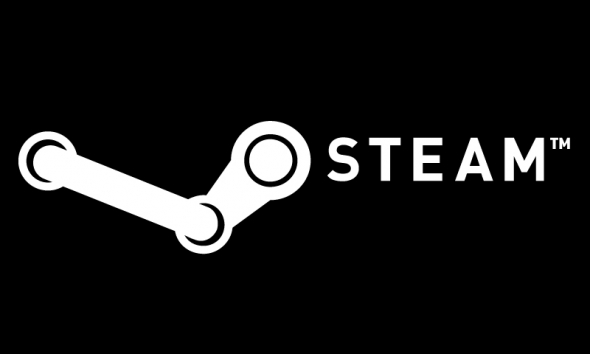
One of the big trends in video games over the past couple of years has been the concept of “games as a service.” Under this sales model, a customer doesn’t simply buy a game once. Instead, the game constantly evolves, adding more content on a regular basis, such as more playable characters, maps, cosmetic options and competitive modes.
The base game itself may be anywhere from inexpensive to entirely free, but its players keep the money rolling in by picking up occasional optional purchases.
Steam recently announced its “Best of 2018,” ranking the top 100 games on its online storefront by various metrics. At a glance, it says that 2018 was a big year for games as a service on Steam, and perhaps a bigger year than a lot of customers realized.
The Top Sellers of 2018, as determined by the amount of overall revenue generated by a product through all available purchases and services, only had three 2018 releases in the top twelve: Far Cry 5, Assassin’s Creed: Odyssey, and Monster Hunter: World.
The rest were service-oriented games, designed to attract and keep a regular audience via the service model. Most notably, Rockstar’s open-world crime game Grand Theft Auto V is still pulling top-ten revenue numbers three years after its release on PC, entirely on the strength of its online mode, and Digital Extremes’ Warframe has risen to become one of the highest-revenue games on Steam as it approaches its sixth anniversary.
There are a few other surprises. The Witcher III is still moving units three and a half years after its release; Kingdom Come: Deliverance overcame bad controls and initial controversy to reach the top 24; and the unforgiving survival game Frostpunk managed to become a solid success despite being one of the most bleak experiences on the market.
Other big games-as-a-service winners in 2018 include the asymmetric multiplayer horror game Dead By Daylight, which undoubtedly profited from its primary genre competitor, Friday the 13th: The Game, having to suddenly cease updating entirely due to a legal dispute over the film franchise’s property rights; the dinosaur-riding survival game Ark; and the free-to-play action-RPG Path of Exile, which released new expansions in December of 2017 and 2018.
The list of games that were played by the most people in 2018 on Steam, as measured by highest simultaneous player count, was unsurprisingly dominated by Valve’s own products: three of the top spots were taken by Counter-Strike, Defense of the Ancients 2, and Team Fortress 2. Ubisoft’s Rainbow Six: Siege overcame a troubled launch period in 2015 to gradually accumulate a fervent following, coming in at No. 4. PlayerUnknown’s Battlegrounds continued to pull big numbers, as did Capcom’s Monster Hunter: World.

The Pacific Northwest had a handful of big local releases this year, many of which pulled in strong digital sales. Matt Makes Games’ Celeste, Subset’s Into the Breach, Harebrained Scheme’s BattleTech, Paizo’s Pathfinder: Kingmaker, Valve’s Artifact, and Microsoft and Insomniac’s Sunset Overdrive (making its long-overdue PC debut) all managed to score sales in the top 12 on Steam during the month of their respective releases. ConcernedApe’s Stardew Valley, which is once again being self-published, rode its multiplayer update in August to a renewed wave of interest in the game, bringing its sales up to reach the top 100 for the year.
This obviously only tells part of the story for 2018. Some of the biggest games of the year never saw a release on Steam at all, most notably Fortnite, Call of Duty: Black Ops IV, and Red Dead Redemption II, the latter of which has yet to see a PC port.
Steam also only released data in the form of these relative rankings on the charts, which suggests nothing about what the actual numbers were. The “platinum” and “gold” ranking categories only list the games in random order, rather than serving as a sequential “top twelve”; if you hit F5 on the page, the games get rearranged.
In past years, we might have been able to compare them to the data mined via SteamSpy to get a fuller picture, but that site’s been slowing down lately because its creator, Sergey Galyonkin, has been gainfully employed working on Epic Games’ online store.
That said, we already know that Steam is heading into a challenging, potentially definitional year for the storefront. It’s likely to survive, of course — as noted earlier, some of the most popular games on Steam are published by Valve, so they won’t be going anywhere — but it’s got incoming competition.
That’s coming from Discord, which recently upped the ante by increasing the revenue earned by sellers on its storefront to a full 90 percent, plus Epic and some big players that are becoming increasingly comfortable with moving much of their sales model to an all-digital format. Steam has played a big part over the last decade or so in shaping the current PC-gaming environment, and in getting a lot of big new players involved in the ecosystem. Now, it’s got everyone gunning for its No. 1 spot, and we’re likely to see some big moves soon if it intends to continue to thrive.
UPDATED 3:30 P.M.: Corrected company name for Warframe to Digital Extremes.



